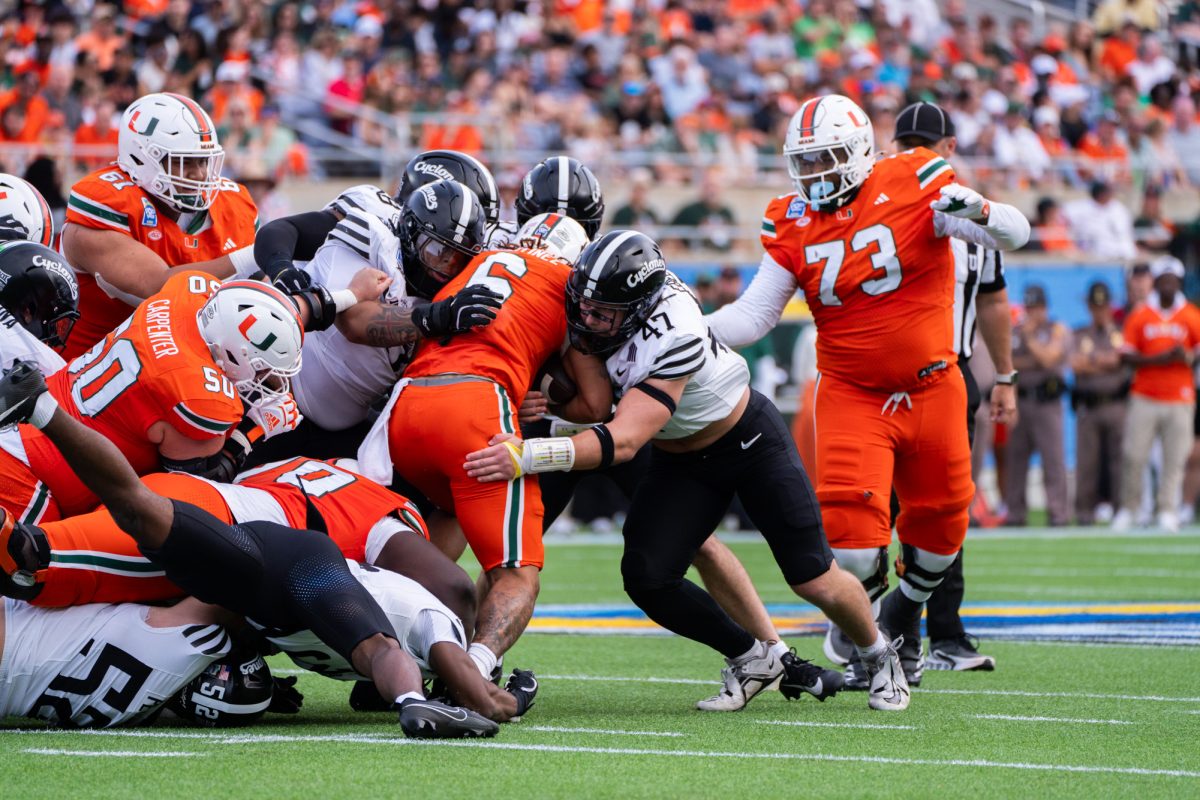ADAMS: The wind is blowin’ in

President Barack Obama is promoting a renewable-energy policy that includes generating energy with wind turbines. Adams argues that wind may not be the best investment for future energy production. Photo: Ross Boettcher/Iowa State Daily
April 26, 2009
The answer my friend, is blowin’ in the wind, the answer is blowing in the wind.”
Yes, Mr. Dylan, your answer may be blowing in the wind. The present question, however, is: is the wind our answer?
According to President Barack Obama, yes.
On Earth Day, Obama visited a wind turbine tower plant in Newton to promote his renewable-energy policy. Calling on Congress to pass legislation that would invest $150 billion in the renewable energy sector over the next decade, Obama said the wind energy sector will simultaneously create jobs, increase national security and — of course — help the environment.
“The choice we face is not between saving our environment and saving our economy,” Obama said. “It’s a choice between prosperity and decline. The nation that leads the world in creating new sources of clean energy will be the nation that leads the 21st century global economy.”
Putting aside the fact that the United States is already way behind countries like Germany in wind-turbine production and Japan in better battery production, the question remains: is a nationwide, heavily subsidized push for wind energy really that great of an idea?
At present, perhaps — but that’s not good enough.
First, foremost and most obviously, the wind does not always blow. This means wind farms cannot produce electricity “on demand” — something our population demands more than any other nation.
Perhaps a multi-billion dollar campaign could convince our citizens we can learn to only expect light at certain times of the day, but probably not. Could we ever be convinced we don’t need our TVs or computers to run on demand? Definitely not.
And wind-energy producers know this. Thus, all wind farms account for the unpredictability of wind and our insatiable demand by backing up their electricity production with, you guessed it, fossil fuels — a cost well-hidden from the public.
Perhaps you might contend we can overcome this problem by storing the excess electricity produced during those gale-force days and nights. Unfortunately, the answer is no.
Large-scale electric energy storage is not currently viable. The only place to store this excess electricity would be at hydroelectric dams. Although one problem with this is only a few states house these dams, the larger issue is storing wind-produced electricity here would mean a substantial reduction in the electricity produced by the dam itself. We would be producing a gain for an equivalent loss — something that is overall worthless.
But let’s say, for argument’s sake, wind farms are perfectly located such that the wind consistently blows, and excess electricity storage is fully possible. The largest problem still remains: this electricity must be efficiently moved from the states where it can be produced — primarily the Midwest — to the most populous states where electricity is most demanded — the East and West coasts.
Thousands of miles of transmission lines would need to be constructed along the country’s interstates to do this. Sure, it would create some of those “green jobs” that are the buzzword today, but it would also create the need for protection from bad drivers, bad weather and maybe even bad terrorists.
It would also require all the states involved — many of which, not requiring the electricity themselves, would not directly benefit from the transmission — to agree to them. It would additionally entail our nation’s citizens coming to an agreement regarding who pays for the construction of what will benefit various states and citizens quite differentially.
Solve all of this, and the last and most notable challenge stems from the fact that electricity is lost during transmission — the greater the distance, the greater the loss. Given the currently centralized location of production, the electricity produced in Iowa, for example, would arrive in Los Angeles or Washington at a mere fraction of its original worth.
Consider all of these glossed-over factors, and enormous subsidies awarded to wind-energy producers might not seem such a sure investment.
Although many Americans — especially those Iowans who have benefited for years from corn subsidies and subsequent ethanol production subsides — might disagree, subsidies should not be automatically accepted as a brilliant thing just because the government decides to enact them. The market failures they aim to address may not necessarily be true failures at all. Perhaps the market has not developed not because citizens do not know what’s best for them, but rather because now is simply not the time for it — and perhaps the time for it will never come.
In the future, perhaps the above issues will be addressed, and perhaps nationwide wind energy will be a sure investment. In some areas of the country, it indeed already is.
But the challenges of wind energy production — and the alternatives to it — must be discussed. Just as with corn ethanol, our nation should not rush into this.
Did we take the time to really consider whether ethanol production was a better investment than addressing our nation’s oil dependence from the demand side? No, we didn’t.
Will we take the time to really consider whether wind energy production is a better investment than tackling our energy future from the demand side?
Again, the Magic 8-Ball is currently reading no.
I, for one, think we should shake it again.
— Steve Adams is a graduate student in journalism and mass communication from Annapolis, Md.






